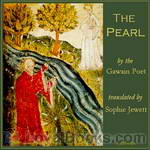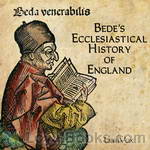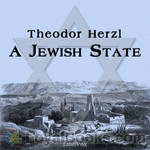|
Books Should Be Free Loyal Books Free Public Domain Audiobooks & eBook Downloads |
|
|
Books Should Be Free Loyal Books Free Public Domain Audiobooks & eBook Downloads |
|
Religion |
|---|
|
Book type:
Sort by:
View by:
|
By: Susan Warner (1819-1885) | |
|---|---|
 Trading
Trading
| |
 Melbourne House
Melbourne House
| |
 The Old Helmet, Volume I
The Old Helmet, Volume I
| |
 Opportunities
Opportunities
| |
 Daisy
Daisy
| |
 What She Could
What She Could
| |
 Nobody
Nobody
There are many romantic tales about a handsome and rich man falling in love with a beautiful lower class woman over the objections of his family. Remember Elizabeth Bennett and Fitzwilliam Darcy? however, it takes more than a good woman to secure a man's happiness. He has to have mental strength. It is not certain that our hero, Tom, has that. Lois is a great woman. However, according to his sister, she is a "nobody." Does money and position control everything? Certainly not. Good people deserve to be happy... | |
 The House in Town
The House in Town
| |
 Daisy in the Field
Daisy in the Field
| |
 The Old Helmet, Volume II
The Old Helmet, Volume II
| |
 Melbourne House, Volume 1
Melbourne House, Volume 1
| |
By: Swami Abhedananda (1866-1939) | |
|---|---|
 Five Lectures on Reincarnation
Five Lectures on Reincarnation
| |
By: Swami Paramananda (1884-1940) | |
|---|---|
 The Upanishads
The Upanishads
| |
By: Sydney Strong (1860-1938) | |
|---|---|
 His Last Week The Story of the Passion and Resurrection of Jesus in the Words of the Four Gospels
His Last Week The Story of the Passion and Resurrection of Jesus in the Words of the Four Gospels
| |
By: Sydney T. Klein (1853-1934) | |
|---|---|
 Science and the Infinite or Through a Window in the Blank Wall
Science and the Infinite or Through a Window in the Blank Wall
| |
By: Sylvester Bliss (1814-1863) | |
|---|---|
 A Brief Commentary on the Apocalypse
A Brief Commentary on the Apocalypse
| |
By: T. A. (Thomas Aiken) Goodwin (1818-1906) | |
|---|---|
 The Heroic Women of Early Indiana Methodism: An Address Delivered Before the Indiana Methodist Historical Society
The Heroic Women of Early Indiana Methodism: An Address Delivered Before the Indiana Methodist Historical Society
| |
By: T. A. (Thomas Alexander) Lacey (1853-1931) | |
|---|---|
 The Acts of Uniformity Their Scope and Effect
The Acts of Uniformity Their Scope and Effect
| |
By: T. B. (T. Bronson) Ray (1868-1934) | |
|---|---|
 Brazilian Sketches
Brazilian Sketches
| |
By: T. J. (Thomas John) Capel (1836-1911) | |
|---|---|
 Confession and Absolution
Confession and Absolution
| |
By: T. T. (Thomas Theodore) Martin (1862-1939) | |
|---|---|
 God's Plan with Men
God's Plan with Men
| |
By: T. W. (Thomas William) Allies (1813-1903) | |
|---|---|
 The Holy See and the Wandering of the Nations, from St. Leo I to St. Gregory I
The Holy See and the Wandering of the Nations, from St. Leo I to St. Gregory I
| |
By: Tatian | |
|---|---|
 Diatessaron: A Harmony of the Four Gospels
Diatessaron: A Harmony of the Four Gospels
The Diatessaron is such an impersonal work that we do not need to know very much about its compiler. It will suffice here to say that he tells us himself that he was born "in the land of the Assyrians," and brought up a heathen. After travelling in search of knowledge, he settled at Rome, where he became a pupil of Justin Martyr, professed Christianity, and wrote in Greek his Address to the Greeks, translated in vol. iii. of the Ante-Nicene Christian Library. He was too independent in his attitude to maintain a permanent popularity, and after Justin's death left Rome and returned to Mesopotamia... | |
By: Tertullian | |
|---|---|
 Shorter Works of Tertullian Volume 1
Shorter Works of Tertullian Volume 1
"In the latter part of the second and in the former part of the third century there flourished at Carthage the famous Tertullian, the first Latin writer of the church whose works are come down to us. All his writings betray a sour, monastic, harsh, and severe turn of mind. "Touch not, taste not, handle not," might seem to have been the maxims of his religious conduct. The abilities of Tertullian, as an orator and a scholar, are far from being contemptible, and have doubtless given him a reputation to which his theological knowledge by no means entitles him... | |
 Apology
Apology
In this work Tertullian defends Christianity, demanding legal toleration and that Christians be treated as all other sects of the Roman Empire. His most famous apologetic work, written in Carthage in the summer or autumn of AD 197. | |
By: The Gawain Poet | |
|---|---|
 Pearl
Pearl
Written in the 14th century by the Gawain poet, 'Pearl' is an elegiac poem reflecting on the death of a young daughter, pictured as a pearl lost in a garden. It is considered a masterpiece of Middle English verse, incorporating both the older tradition of alliterative poetry as well as rhyme, centered around the development of an intricately structured image. Sophie Jewett's translation from the Northern dialect of the original renders much of the poem's liveliness and beauty accessible to modern readers, whilst encouraging them to pursue their reading further, to read the original itself.This recording is dedicated to the memory of Pearl Jean Shearman, 1914-2012. | |
By: The Parliament of England | |
|---|---|
 Book of Common Prayer, 1662: selections
Book of Common Prayer, 1662: selections
The Book of Common Prayer has for nearly 500 years provided the basis for Anglican and allied worship, not only in its English home but many countries around the world. Following England's break from Rome in 1534, a need was felt for a single order of worship - in English rather than the traditional Latin - to be used in churches throughout the country. BCP first appeared in 1549 during the reign of Edward VI, was abolished under Mary and was re-introduced with modifications by Elizabeth I in 1559... | |
By: The Sisters of Notre Dame | |
|---|---|
 Leading Events in the History of the Church: Part 1 - Christian Antiquity
Leading Events in the History of the Church: Part 1 - Christian Antiquity
The first volume in a series of Catholic Church history books written for children. Volume 1 covers the time period from after Our Lord's death till the 5th Century. | |
By: The Venerable Bede (673-735) | |
|---|---|
 Ecclesiastical History of England
Ecclesiastical History of England
Bede's Ecclesiastical History of England is a work in Latin by Bede on the history of the Christian Churches in England, and of England generally; its main focus is on the conflict between Roman and Celtic Christianity. It is considered to be one of the most important original references on Anglo-Saxon history. It is believed to have been completed in 731, when Bede was approximately 59 years old. Divided into five books, it covers the history of England, ecclesiastical and political, from the time of Julius Caesar to the date of its completion (731)... | |
 Explanation of the Apocalypse
Explanation of the Apocalypse
The Explanation of the Apocalypse by Ven. Beda is the earliest of the many works of our own writers on that Book, and, as such, may well deserve to appear in a form accessible to English readers.The chief characteristics of Beda's method of exposition may be thus stated. The several visions are considered not to be successive, but contemporaneous, with occasional recapitulations and to represent the condition of the Church in all ages, under different aspects. The thousand years, in the twentieth chapter, are interpreted of the present period of the Church's existence, in accordance with the opinion of St Augustine, in the second part of his De Civitate Dei... | |
By: Theodor Herzl (1860-1904) | |
|---|---|
 A Jewish State
A Jewish State
Read in English, this is a pivotal document in the history of Zionism and the State of Israel. Herzl designed this work to elevate the discussion of "the Jewish Question" so it would "no longer take the form of violent abuse or sentimental vindication but of a debate, practical, large, earnest, and political." While few of Herzl's proposals were actually carried out, the importance of A JEWISH STATE was in the groundswell of support for a Jewish homeland engendered by its solutions to the practical problems of establishing a new state... | |
By: Theodore Graebner (1876-1950) | |
|---|---|
 Evolution An Investigation and a Critique
Evolution An Investigation and a Critique
| |